Gear up for first ice
Category: article
Nov 17th, 2020 by Keith Worrall
Modified Nov 17th, 2020 at 8:35 AM
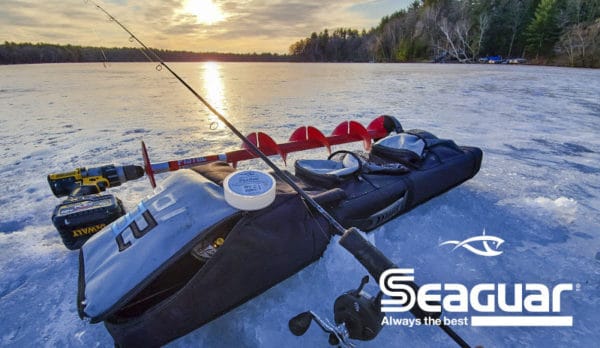
Gear Up For First Ice
All across the northland, morning frost on the windshield and crunchy leaves underfoot mean only one thing to avid anglers: ice fishing is just around the corner. The first weeks of walkable ice encompass some of the best action of the entire hard water season, and it’s important to be prepared when the time comes to take those first steps onto your favorite lake. “It’s all about organization,” notes John Gillespie, host of the popular John Gillespie’s Waters and Woods television show. “I focus on my tackle, taking inventory and restocking boxes in three main categories: Panfish. Walleye. Big Fish. Having everything in the right place makes planning my weekly trips so much easier.” Troy Peterson, ice fishing aficionado and owner of Mr. Bluegill Guide Service in eastern Wisconsin, remarks that, “our collective experience over the past year has taught me that the best ice fishing gear is going to fly off the shelves long before the water gets crunchy. Now is the time to stock up for the season and to invest some time in preparing for a great winter on the ice.”
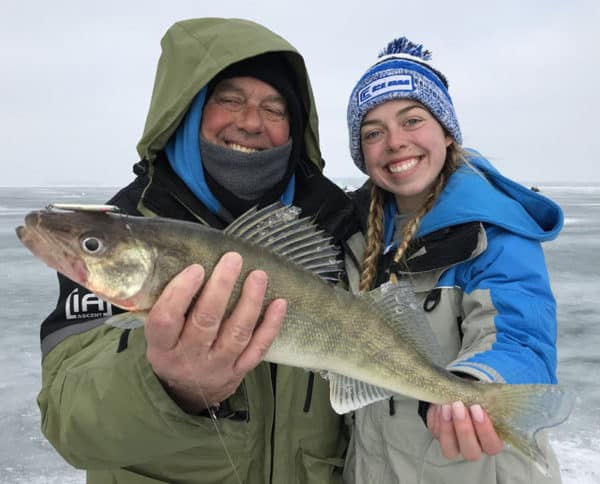
Safety first on early ice
“Early ice is probably the most important time to practice safety,” asserts Peterson. “Obviously, those first couple of weeks of ice are a time when the snow machines stay in the garage and all travel is on foot. I use a spud bar to check ice thickness as I carefully walk onto the ice, because early season ice cover can be incredibly variable – from a perfectly fishable five or six inches in one area, to absolutely unsafe inch-thick ice just a few steps away. I spud my path all the way out to my spots, and am sure to travel only along those routes with safe ice cover. Even with all of that prep, accidents can still happen; I never hit the ice without wearing a float suit, with a set of picks around my neck, to help pull me out of the water if I were to fall in.”
Captain Troy Peterson talks about Seaguar IceX™
“The first few weeks of ice cover are also the most important time to travel light – if it doesn’t fit in a small sled, I’m not bringing it. A drill-adaptable, composite ice auger is a fast, lightweight choice for powering through early season ice. I’ll add my fishfinder, a small collection of essential tackle, rods and reels, a couple of tip-ups and some fresh bait – then off we go!”
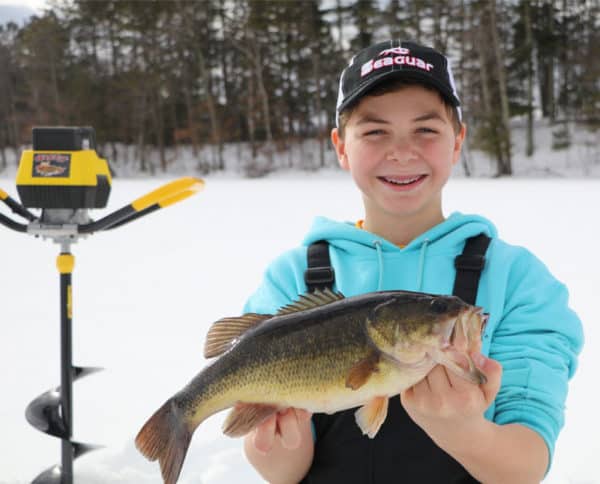
Ice fishing is a battery-powered sport
Now more than ever, success on the ice is driven by power: electrical power. We need access to reliable power from portable batteries to operate GPS/fishfinder combos, ice augers, lighting systems in shelters, and even to keep our phones charged. Peterson notes that, “now is the perfect time to top off the charge on your batteries, because ice will be here sooner than you think.” Compact 12-volt lead acid batteries were once the norm, but these are quickly being replaced by comparably sized lithium-ion batteries that deliver all the power ice anglers demand in a lighter, longer-lasting package. Consider adding a 12-volt, 10 amp-hour lithium-ion battery to power your fishfinder, and grab a second to feed your electrical accessories.
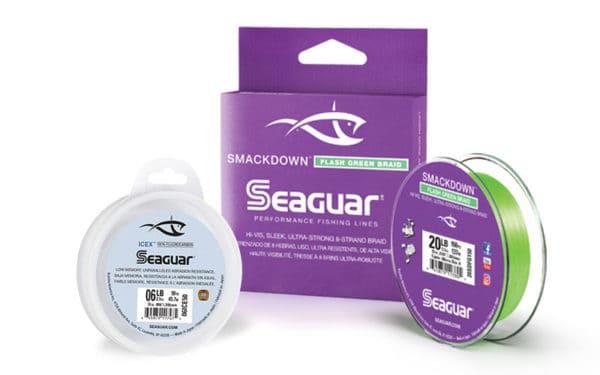
Spool up with the good stuff
Whether you prefer braid or fluorocarbon on your ice reels, now is the right time to respool with the fresh line you need for success. John Gillespie relies on Seaguar Smackdown as the foundation for his hard water presentations, noting that, “I use 20 lb. test Seaguar Smackdown™ in Flash Green on my spinning reels. It’s a very thin, no-stretch line so I get a much better feel and can detect bites even if I’m fishing in deep water. The hi-vis color helps me see line movement and hook-up on light bites.” Troy Peterson agrees, stating that, “all of my hard-line reels are spooled with 20 lb. test Seaguar Smackdown, an eight-strand braided line with an incredibly thin diameter and a smooth finish that helps it peel off the spool easily.” Peterson offers a great tip for stretching your hard water budget, sharing that, “a great way to fish with fresh braid for multiple years is to transfer spooled line from one reel to a different one – that way, the line that saw a lot of use last year is buried deep within the new reel’s spool, and the braid you’ll be using to battle walleye, pike and panfish this season is right on the top, ready to go.”
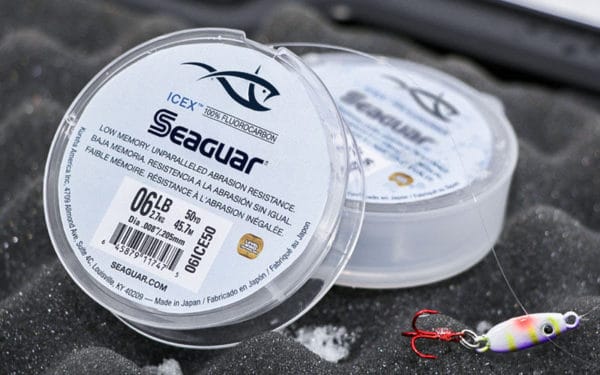
Fluorocarbon plays a key role on the ice, both as a leader and as a main line. Peterson continues, “the reels that I load with fluorocarbon get spooled with fresh Seaguar IceX™ – this is especially important because spinning reels with small diameter spools can impart a significant amount of line memory during the warm summer months, causing the line to spill off the reels in unproductive, bite-repelling coils. Seaguar IceX is a low memory, micro-diameter ice line that’s engineered from exclusive Seaguar 100% fluorocarbon resins. It is built for hard water performance, providing exceptional knot and tensile strength and abrasion resistance even on the coldest days. I recommend 6 or 8 lb. test IceX for jigging walleyes, and really like 3 lb. test IceX for panfish.”
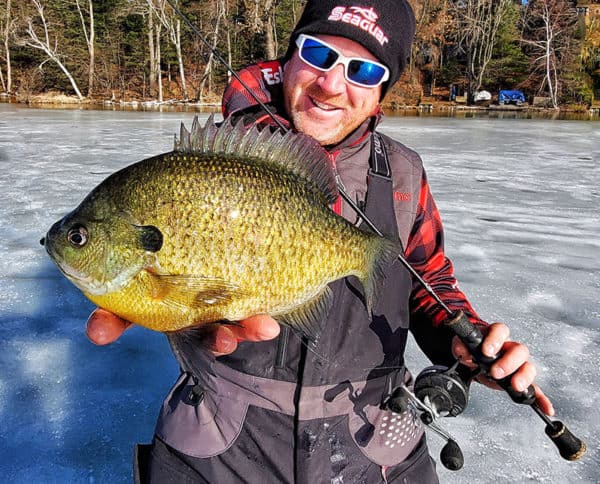
Tip-ups need lovin’ too
Admittedly, most tip-ups fall at the low end of the technology spectrum, and many anglers run the same $15 flags for well over a decade. Yes, tip-ups can last a long time, but to keep them performing in “like-new” condition, you’ll need to give them a little lovin’ before the season starts. Perhaps the most important part of preseason tip-up prep is to clean and replace the lube within the shaft, as emulsified lubricant quickly loses its positive attributes and locks up tight in cold weather. Spool up with fresh line, you’re ready for another season of chasing flags and having a blast on the ice.
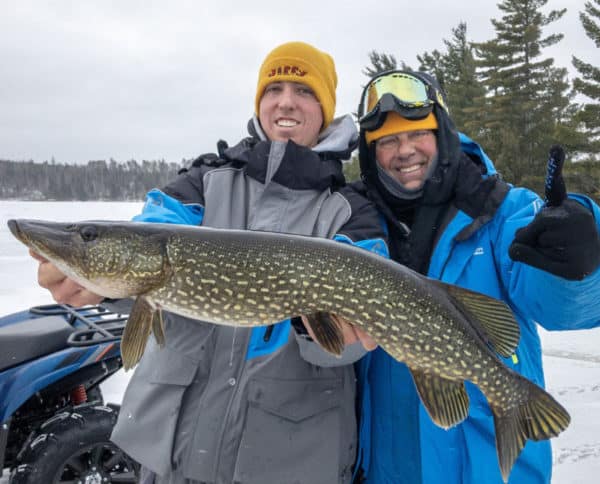
Icy north winds are hard to ignore – another season of ice fishing is on our doorsteps. Put these tips from Troy Peterson and John Gillespie to use as you prepare for another great year on the ice, because early season ice action — like the Seaguar lines and leaders that connect you with success — is Always the Best!